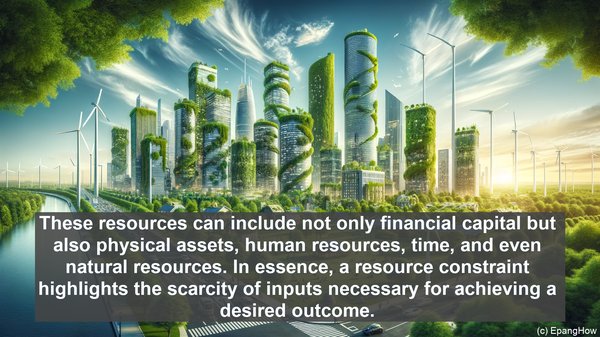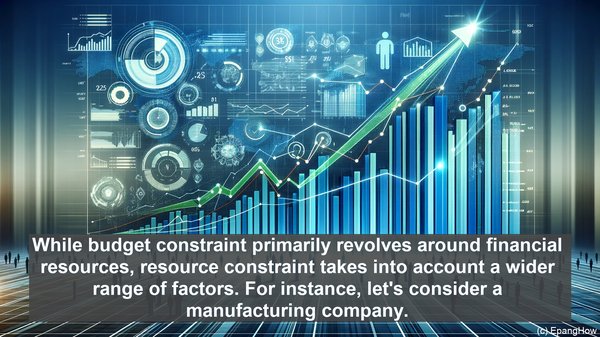Introduction: The Essence of Constraints
Hello everyone! Welcome to our article on the intriguing world of constraints. Today, we delve into the distinction between two vital concepts: budget constraint and resource constraint. While they may seem similar at first glance, a closer examination reveals their unique characteristics and implications. So, let’s get started!
Defining Budget Constraint
A budget constraint is a fundamental concept in economics. It represents the limit on the consumption choices an individual or organization can make due to their limited income or financial resources. In simpler terms, it’s the boundary that defines what can be afforded and what cannot. For instance, if you have a monthly income of $2000, your budget constraint ensures that your spending choices align with this limit.

Exploring Resource Constraint
On the other hand, a resource constraint encompasses a broader spectrum. It refers to the limitations imposed by the availability, quantity, or quality of resources required for a particular activity or project. These resources can include not only financial capital but also physical assets, human resources, time, and even natural resources. In essence, a resource constraint highlights the scarcity of inputs necessary for achieving a desired outcome.
Interplay of Factors
While budget constraint primarily revolves around financial resources, resource constraint takes into account a wider range of factors. For instance, let’s consider a manufacturing company. Its budget constraint would focus on financial aspects like the cost of raw materials, labor, and machinery. However, its resource constraint would encompass factors like the availability of skilled workers, the capacity of the production facility, and even the availability of raw materials in the market.
Implications in Decision-Making
The distinction between these constraints becomes particularly crucial in decision-making processes. Budget constraint, with its financial focus, often plays a significant role in personal finance decisions, such as budgeting for daily expenses or making a major purchase. On the other hand, resource constraint becomes more prominent in strategic decision-making, where the allocation of various resources needs to be optimized to achieve the desired outcome.

Dynamic Nature
Both budget constraint and resource constraint are not static entities. They can change over time, influenced by various factors. For example, a sudden increase in the cost of raw materials can alter the budget constraint for a company, forcing it to reevaluate its production plans. Similarly, a change in market demand can impact the resource constraint, requiring a reallocation of resources to meet the new requirements.
